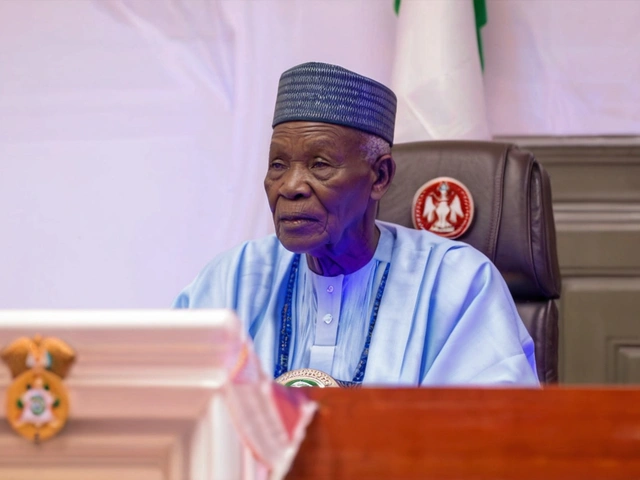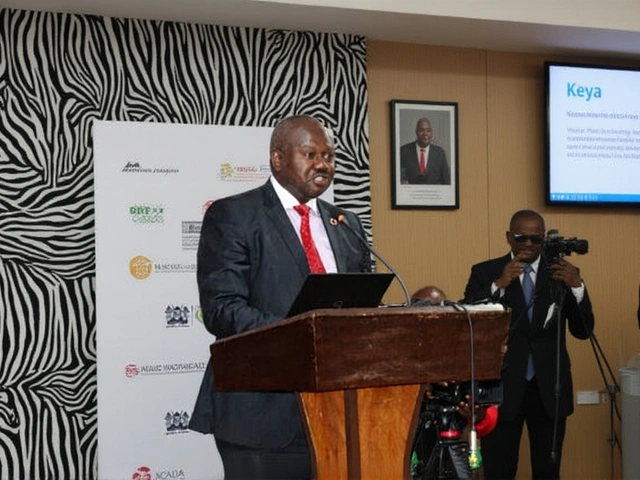Project 2025 – Africa’s Blueprint for a Bigger Future
When you hear Project 2025, a continent‑wide push launched in 2025 covering sport, infrastructure, energy and public‑health goals, you’re looking at a coordinated effort to raise Africa’s global profile. Also called 2025 African Development Drive, it ties together everything from football qualifiers to rail upgrades. The drive is anchored by bold government backing, private‑sector cash and a shared sense of urgency. Project 2025 isn’t a single programme; it’s a web of projects that feed each other, creating momentum across sectors.
How sport fuels the ambition
The football realm illustrates this best. South Africa’s coach Hugo Broos reminded fans that a win over Rwanda is a make‑or‑break moment for World Cup qualification, the 2026 FIFA tournament race that every African nation is eyeing. At the same time, DR Congo’s 4‑1 triumph in Juba shows how a single result can reshape Group B dynamics. These matches aren’t just games; they’re litmus tests for national morale, tourism revenue and corporate sponsorships that feed back into other Project 2025 pillars.
Beyond football, the tag also captures rugby’s URC upsets, basketball’s continental qualifiers and even the roller‑coaster of club football in Europe. All these stories share a common thread: they demonstrate how performance on the field can unlock funding for schools, hospitals and roads back home. When a nation shines in sport, it attracts investors who see a stable environment for long‑term projects.
Infrastructure gets a spotlight, too. The historic TAZARA railway, a Tanzania‑Zambia rail link undergoing a $1.4 billion revamp is a centerpiece of the transport agenda. The upgrade aims to streamline copper exports, cut shipping times and create jobs along the line. By linking mineral‑rich zones to ports, the railway boosts the economics of neighboring nations, which in turn fuels the financing of sports academies and health clinics under Project 2025.
Energy transition is another engine of change. Nigeria’s backing of the Hydrogen Polis, a $7.9 billion green‑hydrogen project slated for 2028 signals a shift toward renewable fuels. The ISCC certification gives the venture credibility, attracting foreign investors who also look for stable political climates – something that strong sports performance can help assure. In practice, the hydrogen plant’s construction creates a demand for skilled workers, prompting education reforms that tie back into the same SBAs Kenya rolled out in 2025.
Public‑health challenges knock on the same door. Kenya’s shocking 247% rise in synthetic drug deaths, highlighted at a global coalition forum, forced the launch of a new intelligence unit. This health crisis is part of Project 2025’s “social safety” strand, which pairs law‑enforcement upgrades with community outreach. The drug‑related surge also pressures governments to invest in better data systems – a need echoed by Kenya Power’s call for 2,555 new transformers to meet rising electricity demand.
Education reforms close the loop. The Kenya National Examinations Council’s rollout of 2025 Term‑Three SBAs reflects a push to modernise curricula, preparing students for jobs in rail construction, green energy and sports management. When learners acquire relevant skills, they become the workforce that keeps infrastructure projects on track and fuels the analytical side of football scouting.
All these pieces – sport, rail, hydrogen, health and schooling – interlock under the umbrella of Project 2025. Below you’ll find a curated set of stories that show each component in action, from a kitesurfer’s tragic encounter with a whale to a rugby coach’s rally before a crucial CHAN match. Dive in to see how the continent’s biggest ambitions are shaping everyday headlines.
Trump signs an order to close the Education Department, sparking outrage from special‑education advocates who warn the shift to HHS could disrupt services for 7.5 million students.
Recent-posts
Jul, 17 2024
Jul, 17 2024
Jul, 26 2024






